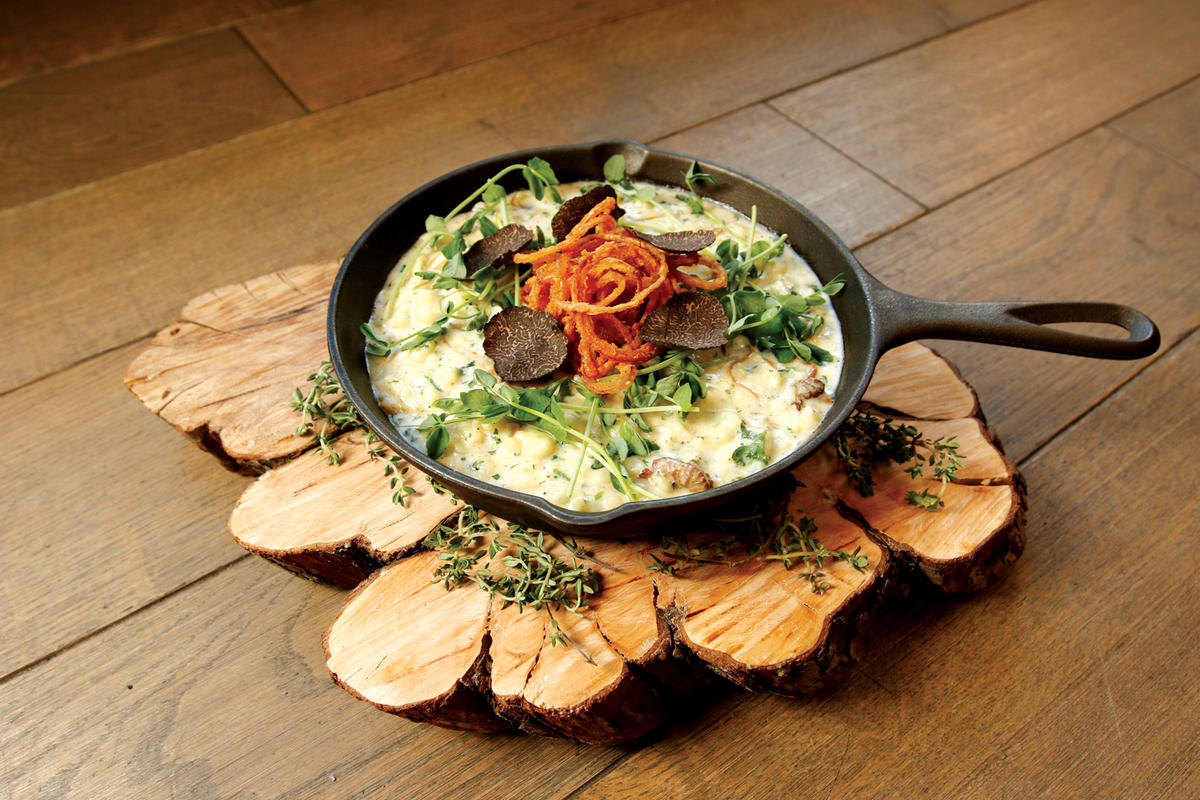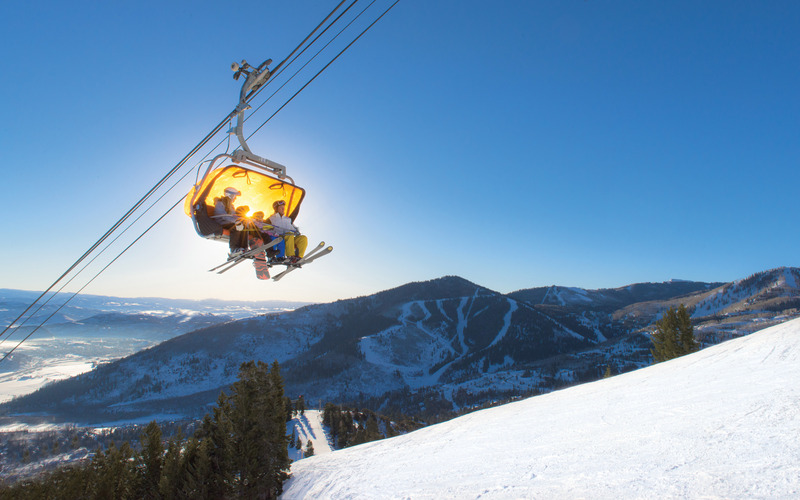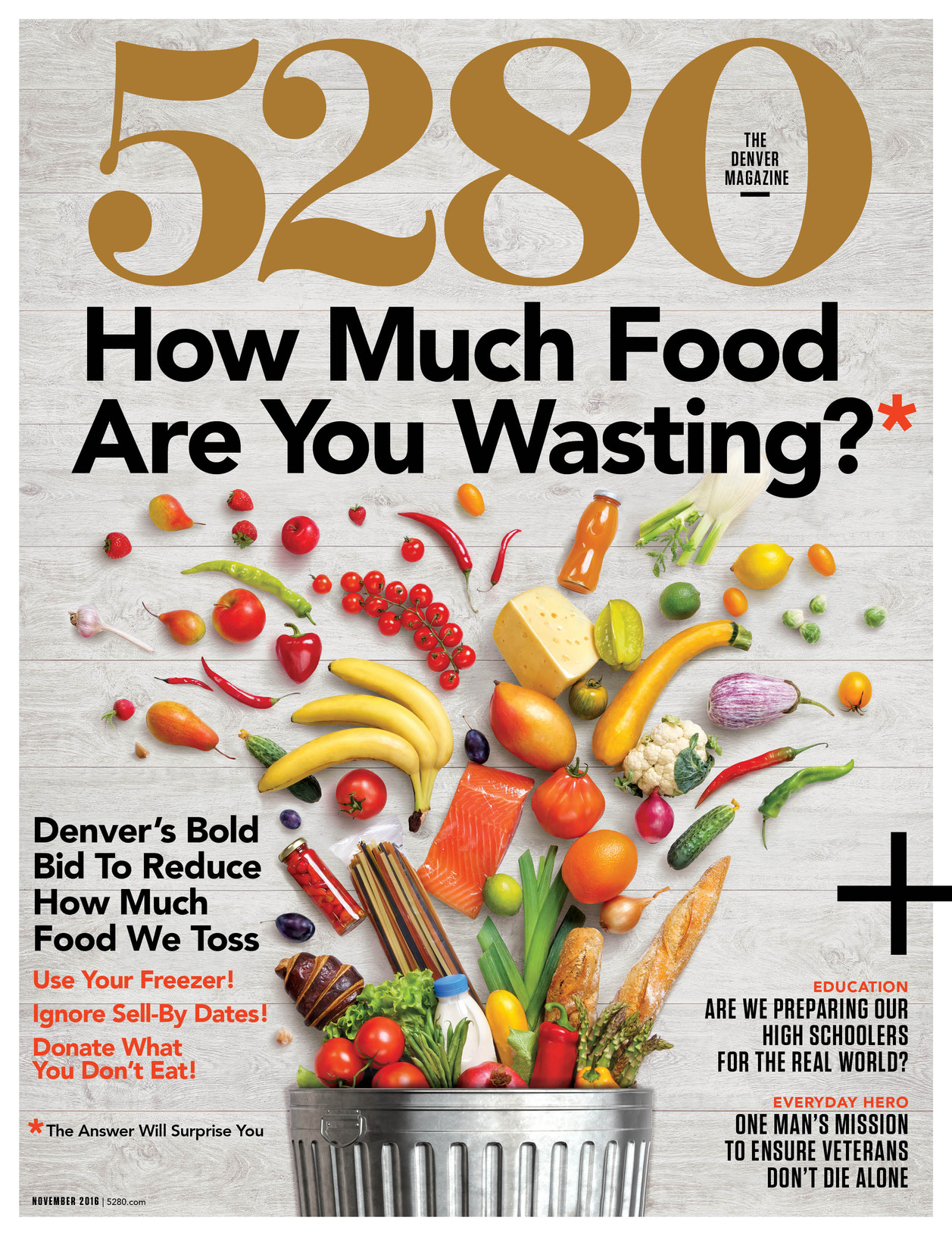The Local newsletter is your free, daily guide to life in Colorado. For locals, by locals.
The long stretch of brake lights ahead of me is all too familiar. In recent years, I-70 has transformed from a superhighway into an insufferable parking lot, and even making the trip west at 9 p.m. on a Friday isn’t easing my traffic pain. Why, I wonder, am I putting up with this just to go skiing?
Although I’m loath to admit it—and saying it aloud would be damn near blasphemy in Colorado—my enthusiasm for the slopes has, over the previous few seasons, started to wane. Blame it on the traffic, lift-line backups, or mediocre snow, but it just wasn’t feeling worth it anymore to make turns down the same now-boring runs. Even après started to feel tedious and expected.
Then, in September 2014, Vail Resorts made an announcement: It was acquiring Utah’s Park City Mountain Resort and planned to connect the ski hill—known for its six terrain parks and straight to Main Street lift access—to the former Canyons Resort (already in Vail’s portfolio) via gondola. The resultant mega ski mountain would take on the name Park City Mountain (PCM) and become the largest ski and snowboard resort in the country. Vail’s recent corporate takeovers have received mixed reviews (see Canada’s Whistler Blackcomb, which Vail bought in August, to the chagrin of skiers). But after an initial backlash against the corporation’s Park City purchase, most locals came around, in part because they knew the mountain’s former management had been in disarray. It also expanded their skiing catalogue, along with Coloradans’: PCM was added to Vail’s Epic and Epic Local passes.
The merger piqued my interest. I’d skied in the greater Park City area once before, at Snowbird Ski Resort about an hour away in Little Cottonwood Canyon, and had been charmed by the small town’s arts scene and colorful architecture. The quirky bars, gourmet eateries, and Sundance Film Festival–bound celebrities were equally beguiling. But for those who love to ply the snow, Park City’s location—in the shadow of the Wasatch Mountains, bookended by PCM and Deer Valley Resort, and within a 45-mile drive of seven other resorts—is the real draw. In short, it’s a snow hound’s paradise. And perhaps, I thought, the perfect place to rediscover the joy of skiing.
Stepping into the cool mountain air after devouring a breakfast burrito from Murdock’s Café, I found Canyons Village, one of the resort’s base areas, nearly vacant. I had expected Vail Resorts’ influence to be immediately apparent at PCM, but there wasn’t much to see where the slopes ended. Lodging dominated my view, with some restaurants and shops peppered about. The vibe wasn’t what you’d call compelling. In fact, none of PCM’s three bases boast the energy of, say, Arapahoe Basin, whose small base is consistently filled with families wrangling kids into gear or groups of friends clinking Bloody Marys. And, according to its spokespeople, Vail has no plans to change that.
Where Vail’s touch is evident is on the mountain: The juggernaut spent $50 million last year on new and updated restaurants, chairlift upgrades, trail maintenance, and building the Quicksilver Gondola to connect the previously separate resorts. The ski area now encompasses 17 mountain peaks, 300 or so trails (half of which are intermediate level), and more than 7,000 acres of skiable terrain that stretches 6.5 miles. “It skis like a brand-new mountain,” says Bill Rock, chief operating officer for PCM. “There’s great terrain for every member of the family. You can spend your whole vacation exploring and discovering new parts of the mountain. It’s our size that makes us really unique.”
It’s more terrain, in fact, than a person can cover in two days, but my skiing partner and I were excited to navigate as much of it as we could. On a cloudless winter morning—with endless miles of the Uinta Mountains’ snowy ridges spread out in front of us—I clicked into my skis. Hours quickly evaporated as we tried out various combinations of the intermediate and advanced runs off the Saddleback Express and Tombstone Express lifts. I comfortably flitted in and out of spacious trees, my skis sailing through the deep, dry snow. Meanwhile, my companion, an expert snowboarder, relished the tighter lines and denser glades on parallel runs. The trails funneled us to a single lift so we always wound up in the same spot—a rarity at any resort, but particularly on extra-large mountains like this one.
At lunchtime, we skied to the Canyons Village base to refuel at the Farm Restaurant, a five-year-old from-scratch eatery serving upscale twists on familiar mountain fare, such as bison chili or a chicken sandwich topped with almond-and-watercress pesto. We warmed ourselves from the inside out with a cocktail called Canyons Cider, made with local High West Distillery double rye whiskey, before heading back out for a few afternoon turns in the crisp high-elevation air.

Before we knew it, the sun was beginning its descent and the lifties were alerting us to last chair. Our final run of the day began at the top of Ninety-Nine 90 peak (elevation: 9,990 feet), where a black diamond’s steeps-and-bumps combo turned my legs into jello. We eventually landed at the Frostwood Gondola. It ferried us to the Canyons Village–based Waldorf Astoria Park City, a fancy chandeliered resort (the only luxury offering in the main base area; there are others in downtown Park City) where affable staff members whisk you in golf carts from the gondola to the front door—which is just across the street.
We dropped our gear with the ski valet, grabbed cups of complimentary hot chocolate, and traded our snow pants for swimsuits. We had a dinner reservation at Powder, the hotel’s dimly lit restaurant, but the Utah red trout and buffalo rib-eye with spicy huckleberry glaze could wait. Any skier worth her planks knows the only way to toast a solid day on the hill is in a hot tub.

We woke early the next morning, eager to check out the approximately 3,000 acres we hadn’t even set boots on yet. Fueled by a quick bagel with cream cheese from Jupiter Java at the Canyons base, we began making our way toward the Park City side of the mountain. Reaching the Quicksilver Gondola required linking together about six lift rides, a slightly exasperating and time-consuming necessity. But it was worth it: Vail’s idea to connect these two resorts was exceptionally cool because it combined two areas with different run styles (the Park City side of the mountain has shorter, tighter trails than its sister mountain), making it that much easier to pick your slopes based on your mood or the weather.
We made lap after lap on the black diamond runs off the Silverlode Express. Double Jack, Fool’s Gold, Mikey’s—each one had its own enticing feature, whether it was an untracked pile of powder between tree trunks or steeps completely devoid of other skiers. It was Saturday, but lift lines were short—an experience you’d never have on a sunny weekend day at Keystone Resort or Vail Mountain.
At noon, Miners Camp beckoned. The new on-mountain eatery—which replaced the at-capacity Snow Hut Restaurant and its somewhat tired menu—at the base of Silverlode is Vail’s most obvious fingerprint. The massive wood building features floor-to-ceiling windows, a wall of outlets to charge your phone or GoPro, a bar, and a cafeteria that serves everything from pizza to burgers to build-your-own salads. We moved our lamb gyros and Park City Brewery beers aside to lay out the trail map. We had three hours left to choose our own adventure before we had to clean ourselves up for dinner at Tupelo, one of the newer restaurants on Park City’s Main Street. I began to strategize, linking runs and lifts together in an efficient way. But then I stopped myself.
Over the past day and a half, I’d been toeing the line between the anxiety and the thrill that develops when you careen down a mountain. It was precisely the feeling I’d been missing at home, and it came from embracing spontaneity and exploring the unknown. I took the last sip of my pint, folded up the map, zipped it into my pocket, and headed back outside.
If You Go
Getting There: Southwest Airlines offers regular 1.5-hour nonstop flights to Salt Lake City International Airport. Park City is 36 miles away, so you’ll need to arrange a shuttle in advance; if your hotel doesn’t offer one, book a ride with All Resort Express (allresort.com), which charges about $80 round-trip. And there’s no need to rent a car: Park City’s around-town bus system is free.
Skiing: PCM opens on November 18 and is part of Vail Resorts’ Epic, Epic Local, Tahoe Local, Epic 7-Day, and Epic 4-Day passes.
Lodging: Room rates start at $609 per night at the Waldorf Astoria Park City during peak ski season. 2100 Frostwood Drive, 1-866-279-0843.
Dine: The Farm Restaurant, Miners Camp, and Murdock’s Café are all located at Park City Mountain; Tupelo, 508 Main St., 435-615-7700; Powder (inside the Waldorf Astoria Park City).









